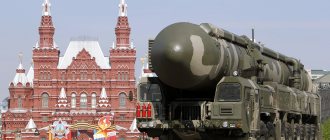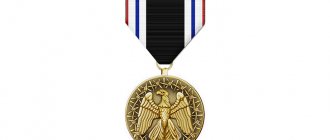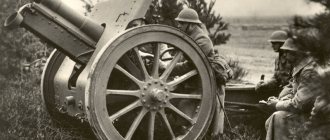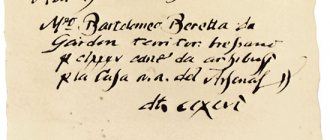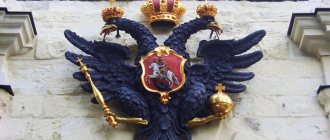The Guard is the quintessence of the military traditions of any army, the forge of the best military personnel, the custodian of military heritage
Since ancient times, rulers and generals have sought to unite the best warriors into separate, most combat-ready units of their army. They guarded emperors and kings, and in battle they were the last chance to turn the tide of the battle. Persian "Immortals", the Roman Praetorian Guard, Varangians in the service of the Byzantine emperors - history knows many elite and very combat-ready units. States and armies have been preserving the fighting traditions of their best warriors for hundreds of years. And today we will tell you about the history of the emergence, formation and evolution of the Russian Guard.
What is the Russian Guard?
The Russian Guard is an executive body. It was created in 2016 on the basis of the Russian internal troops.
The main specifics of the service do not require equipment or special weapons. The issue of changing clothes was raised simultaneously with the creation of the Russian Guard.
It included departments of police units and private security.
So army and police special forces perform different tasks, but at the same time closely interact with each other. The form satisfies the specifics of the activities of each department.
The Russian Guard has the right to license certain types of activities, they are related to security activities. Forceful actions will also be carried out, as the Russian Guard will monitor the readiness of troops in peacetime and wartime
. The powers of the body are quite extensive, since the Russian Guard can develop uniforms for training in professional institutions.
The authority may have access to the requested information of authorities, organizations and associations. It can stop the use of networks and communications. The Russian Guard has the right to organize an examination, but only in those activities that are assigned to it. Based on established documents, the body is the highest among the military, and it has the right to exercise two of the three branches of government.
Main functions:
- Work with the internal affairs bodies of the Russian Federation;
- Maintaining public order;
- Ensuring security and emergency conditions;
- Ensuring the legal regime;
- Fight against terrorism and extremism;
- Security of important government cargo;
- Supervision of compliance with legislation in the field of arms trafficking;
- Protection of private activities.
The military can check documents and make arrests. If an emergency occurs, employees have the right to prohibit the movement of pedestrians and use citizens' vehicles to travel to the scene of the situation. It is prohibited to use weapons against pregnant women and persons with disabilities.
The Russian Guard has the authority to control the actions of the National Guard. However, the authority's sphere of influence is broader. The body itself is legislative, but is endowed with the right to introduce new laws in areas that are under its control, namely:
- Activities of the National Guard;
- Prevention of administrative offenses;
- Security of cargo and strategically important objects;
- Protection of private property.
What does it contain?
- Internal troops of the Ministry of Internal Affairs;
- Special Forces Response Center;
- Rapid Response Squad;
- Mobile detachment;
- Aviation Special Purpose Center;
- Management body for organizing licensing and permitting work.
The subordinate organization is the National Guard.
Elite of the Russian Army
Not a single battle in the history of the Russian Empire was complete without the participation of the guards. But for them, as for Russia, a great test was approaching - the era of the Napoleonic Wars. Battles such as Kunersdorf, Austerlitz, Friedland, Borodino, Leipzig, and many other military episodes are written in golden letters in the history of the Russian Guard.
Uniform of the Life Guards Horse Regiment in 1848
The feat of the Life Guards Cossack Regiment at Leipzig completely saved the life of Emperor Alexander I, who from that moment included the Cossacks in the royal guard. And the heavy blows of the Russian guards cuirassiers and cavalry guards and the tenacity of the foot guard squares will be remembered by French veterans for a long time.
In the new century, special guards traditions began to take shape. It is clear that they tried to recruit tall and beautiful-looking soldiers into the ranks of the guards regiments. But over time, special requirements for appearance began to be made. For example, blue-eyed blonds were selected for the Semenovsky regiment, and dark-haired ones, on the contrary, for the Izmailovsky regiment. In the Life Guards, the Jaeger Regiment took “elegantly built” ones, and in the Moscow Regiment, they took red-haired ones.
The officers also formed a number of traditions. The officer was supposed to “control his alcohol,” that is, not get drunk quickly. For example, shot glasses filled with vodka were placed on the steps of the stairs, and the newly minted guards officer had to climb to the very top, drinking on each step. At the end, the commander was waiting for him, who should have reported his arrival to the regiment without hesitation. If this worked out, then he was accepted into the “family” of the regiment.
K.K. Pirate. Chief officers of His Majesty's Life Guards Cuirassier and Her Majesty's Life Cuirassier regiments. 1855
They also played “Cuckoo”: locked in a dark barn, they fired live ammunition at each other by ear, periodically shouting “cuckoo.” They even developed their own special guard language (“drying crystal” means drinking, “sweating on a leaf” means playing cards), songs and sayings (for example, “Life Hussars drink only champagne wine”).
Until 1917, the guard remained a stronghold of the nobility. The largest number of noble officers served in the guards regiments. In the cavalry, for example, the number of noble officers did not fall below 96%.
By the beginning of the First World War, the guards units included: 13 infantry, 4 rifle, 14 cavalry regiments. The guard also included 4 artillery brigades, a sapper battalion and a naval crew, and several ships. The Guard performed well during the First World War, especially during the Brusilov breakthrough. Unfortunately, many regular and well-trained soldiers and officers were eliminated. And then the revolutions of 1917 broke out, after which the guard was abolished as a “relic” of the past.
Nicholas II in the uniform of His Majesty's Preobrazhensky Life Guards Regiment
What does the clothing of the Russian National Guard look like?
At the moment, the composition of the Russian Guard is 350 thousand people. These structures are numerous security forces. The Russian Guard is subordinate to the President.
The uniform was designed to perform a variety of tasks. The following options are presented:
- Uniform for everyday wear;
- Equipment for riot police and special forces;
- Winter and summer sets;
- Clothing for special forces and intelligence units.
Office
Riot police have several types of service uniforms. In field conditions, blue and green are used.
Black is necessary to capture dangerous criminals. It includes armor protection, as well as a bulletproof helmet.
The main attribute is a bulletproof vest with the fifth degree of protection, knee pads, and thigh pads. Now the Russian Guard wants to abandon the “Number” camouflage pattern for field clothing.
Casual
The casual uniform is similar to clothing for law enforcement officers. They have a distinctive feature - the color of the uniform is not blue, like that of internal affairs workers, but gray on outer clothing. In addition, there are side, chest and sleeve pockets. A prototype exoskeleton is presented. It helps to increase the capability of a person.
There are special levers that are attached directly to the arms and legs. They transmit movement impulses during the work of arms and legs. So far, the project has been launched as an experiment, but the authorities hope that the new product will be accepted by employees.
Summer
Previously, summer outfits consisted of khaki and black. Sometimes light colors are used.
Some employees of the Russian Guard wore the same clothes as the internal organs of the Ministry of Internal Affairs. She was their prototype. In addition to the new ammunition from the old equipment, a new dress uniform for operational purposes remained.
The Lynx summer uniform is used in special units. Raid backpacks have removable modules.
Winter
Winter sets include insulated jackets, mufflers, and gloves. A hat with earflaps can be worn at temperatures below minus ten. In this case, you can lower the headphones. If they are raised, the ends of the braid should be tied. Casual and woolen caps are worn with winter clothing. Hats with visors and caps are worn straight. In this case, tilting is not allowed.
If weather conditions deteriorate, you can wear winter casual jackets with a hood. Insignia are located at the corner of the collars.
Camouflage
Particular attention is paid to camouflage uniforms. It contains the effect of infrared remission. Such clothing helps make soldiers invisible if they are under night vision.
Camouflage combines spots of four colors - black, green, brown and dark green. Previously, “Kink” was the most popular. Field kits were used in reconnaissance
. The Special Forces wears a uniform with small ragged spots in five colors.
Invisibility is achieved thanks to the light reflection of camouflage spots. They blur the image of a person, and he merges with the surrounding landscape.
Thermal underwear with an intelligent operating mode has also been developed. The kits help create a comfortable microclimate. It makes you feel as comfortable as possible. In addition, the underwear creates pressure and holds the muscles. This helps avoid fatigue during intense exercise.
Women's
The female uniform consists of a suit, T-shirt, and low shoes. In winter, a hat made of astrakhan fur, a jacket, a suit, a cap and a muffler are used. All things are usually black and white.
Basic clothing is a casual suit. It consists of a jacket and trousers, a skirt. The jacket should create a straight silhouette, with a zipper included. Shoes are used only in black.
The women's set consists of:
- Caps;
- Wool blend jacket;
- Trouser;
- Belt;
- Tie;
- Tie clips.
Front door
The dress uniform should be used at official events, parades, on holidays, and when receiving state awards. The dress uniform in the summer can be a white shirt, a gray jacket, blue trousers, a tie, and low shoes.
In winter, it is permissible to wear a winter jacket, a hat made of astrakhan fur, a jacket, woolen trousers, a tie and a muffler.
Russian Guard. History of the formation and traditions of the Russian Guard
The Russian Guard is the color and pride of the Russian Armed Forces, the personification of indestructible military power, mass heroism and military valor. Its military traditions serve soldiers as an example of loyalty to military duty and the Fatherland.
History and traditions of the Imperial Guard
“Guard” translated from Italian means security, guards, selected privileged part of the troops. It arose with the emergence of slave states, when special guards (bodyguards) appeared under monarchs and military leaders. For example, in Ancient Greece it was called a “sacred detachment”, in Ancient Persia it was a 10,000-strong corps of “immortals”, in the army of Alexander the Great it was a 6,000-strong corps, which included heavy infantry (gyraspists) and heavy cavalry (hetaerae). In ancient Rome, Gaius Marius had a cohort of praetorians.
In the Middle Ages, special detachments of selected warriors existed in many armies. The commanders of Byzantium, Charlemagne, Genghis Khan and others had them.
The term "guard" first appeared in the 12th century in Lombardy (Italy). Initially, it designated a selected military detachment guarding the state banner. With the creation of standing armies, the guard was divided into palace (to protect the monarch) and military (elite units of the army). It existed in almost all European countries - France, Italy, Prussia, England and others.
The Russian Guard (Russian Imperial Life Guard) existed from 1721 to March 1917. It was created by Peter I in 1696-1700 on the basis of the Preobrazhensky and Semenovsky “amusing” regiments. The Russian Guard received its baptism of fire in the Battle of Narva in 1700, where it saved the Russian army from complete destruction. For this feat, the officers of the regiments were awarded a badge with the inscription “1700 November 19.” Peter I ordered the guards to wear red stockings instead of green ones as a sign that they fought knee-deep in blood.
In the 18th century, the Russian Guard participated in all wars of the Russian Empire. The Guards regiments trained officers for the entire army and were staffed almost exclusively by nobles, for whom military service was mandatory. From the mid-30s of the 18th century, the rank and file of the guard began to be replenished with recruits from the tax-paying classes, and after the release of the manifesto on freedom for the nobility in 1762, this method became the main one. The social composition of the guard provided it with great political influence. The support of the guard predetermined the success of all palace coups of that time. As an elite part of the Russian army, the guard enjoyed great privileges. For example, according to the Table of Ranks of 1722, guard officers had seniority over army officers of two ranks. With the formation of the Young Guard in 1813, its officers received seniority of one rank. This order existed until the end of the 19th century, when Alexander III curtailed the privileges of the guard.
In the 19th century, the guard participated in full force in all the wars that Russia waged with Napoleon. She especially distinguished herself in the battles of Austerlitz (1805) and Borodino (1812), in the battles of Kulm (1813) and Gorny Dubnyak (1877).
At the beginning of the 20th century, individual units of the guard took part in the Chinese Campaign (1900) and the Russian-Japanese War (1904 -1905). During the First World War (1914 - 1918), the Guard troops successfully operated in the Battle of Galicia, Warsaw-Ivangorod, and certain operations in Lodz. In the summer of 1916, as part of the Special Army, the guard took part in the Brusilov breakthrough.
During the First World War, significant changes occurred in the organization of the Guard. Due to serious losses in personnel, representatives of the peasantry and working class began to be called upon to replenish it. The soldier masses of the guard bore the hardships of war along with the entire Russian army and ceased to be a stronghold of tsarism. This seriously affected the political mood among the guards. As a result, after the victory of the February Revolution of 1917 and the abdication of the tsar, the guard did not even make an attempt to intervene in the course of events. The Provisional Government retained it, abolishing the prefix “lab” and the name “Imperial”. After the conclusion of the Brest-Litovsk Peace Treaty in 1918 and the demobilization of the old tsarist army, the guard was disbanded.
During the revolution of 1917, the Red Guard appeared in many large cities of Russia. It was staffed by voluntary workers on a territorial basis (by factories) and was the main force of the Land of Soviets. On the basis of the Red Guard detachments, at the beginning of 1918, the first units and formations of the Workers' and Peasants' Red Army were formed, many of whose fighters and commanders later became; prominent Soviet military leaders. After the introduction of compulsory military service on July 10, 1918, the Red Guard was gradually abolished as a form of organization of the armed forces.
The military uniform of the guards has always been a symbol of honor, dignity, discipline, and the expression “uniform honor” was identical to the concept of “honor earned on the battlefield.” After all, they, the guardsmen, were the only ones in the Russian army who were granted not only red stockings, but also white piping. It was considered the property of sailors and reminded the guards infantry of their valiant participation in the naval battles of Peter I. In memory of the Narva Victoria of 1704, officers of the Preobrazhensky and Semenovsky regiments wore special plaques.
It should be noted that when new types of weapons were introduced into the army, they first entered the guard. So, during the Russian-Turkish war of 1877 -1878. The guards regiments were already armed with the improved Berdan rifle No. 2, while the army units were armed with older rifles.
The guards sacredly cherished the honor of their regiment and its ancient traditions. The name of the regiment appeared on the battle banner and was a source of special pride for all personnel. The assignment of a name to a regiment in memory of military merits was considered an outstanding event. The first duty of every guardsman was to protect the military banner of the regiment. These and other glorious traditions of the Russian Guard were continued by the Soviet Guard.
History and traditions of the Soviet and Russian Guards
The Soviet Guard was not born in a thunder of fireworks and honors. The first guard formations arose during the Battle of Smolensk in 1941 - at a time of mortal danger for the Fatherland, at the most difficult, most difficult stage of the Great Patriotic War, when our army, in unfavorable conditions for itself, stubbornly, at the cost of incredible efforts and great sacrifices, held back a sudden, treacherous, a gradually prepared enemy invasion. There, near Yelnya, as a result of a counterattack by the Western and Reserve Fronts, a large enemy group was defeated for the first time, and the city was liberated.
On September 18, 1941, the People's Commissar of Defense of the USSR issued order No. 308, which noted the special military valor of the 100th, 127th, 153rd and 161st rifle divisions, which showed mass heroism, examples of courage, bravery in the battles for the Motherland, discipline, organization, high military skill of the personnel. By this order, the formations that distinguished themselves, commanded respectively by Major General I.N. Russiyanov, Colonels A.Z. Akimenko, N.A. Gagen, P.F. Moskvitin, were renamed the 1st, 2nd, 3rd and 4th Guards Rifle Divisions. At the same time, by decision of the Supreme Command Headquarters, the formation of guards mortar units began.
One of the first in the Red Army on November 18, 1941, the legendary 316th Rifle Division under the command of Major General Ivan Vasilyevich Panfilov received the title of 8th Guards, which courageously fought against the Nazi invaders on the outskirts of Moscow in the Volokolamsk direction. 28 Panfilov heroes accomplished an unprecedented feat at the Dubosekovo crossing, stopping the advance of 50 enemy tanks. And the words of political instructor V.G. Klochkova: “Russia is great, but there is nowhere to retreat - Moscow is behind us!” have become synonymous with courage, heroism and resilience.
The Soviet Guard irresistibly grew stronger and matured in all branches of the Armed Forces and branches of the military. The name “Guards” was given to units, ships, formations and associations that distinguished themselves in the battles of the Great Patriotic War, as well as those newly formed in special states. During the four years of the Great Patriotic War, 11 combined arms and 6 tank armies, dozens of rifle, cavalry, tank, mechanized, aviation corps, divisions and individual units, and 18 warships were awarded the honorary title of “Guards”.
The Guard of the Great Patriotic War is a galaxy of heroes whose names will never fade. Among them is Yuri Vasilyevich Smirnov, a junior commander of the Red Army, who performed a heroic feat as part of the 77th Guards Rifle Regiment of the 26th Guards Rifle Division, and is forever included in his lists. On the night of June 24, 1944, while part of a tank landing force breaking through enemy defenses in the Orsha direction in the battle for the village of Shalashino, he was captured by the enemy, seriously wounded. During interrogation, despite cruel torture, the courageous warrior did not reveal military secrets to the enemy. The embittered Nazis crucified him on the wall of the dugout, and stabbed his body with bayonets. For his courage, loyalty to soldier's duty, military oath and heroism, he was awarded the title of Hero of the Soviet Union.
The guardsmen were full holders of the Order of Glory, Heroes of the Soviet Union, Guard Senior Lieutenant Ivan Grigoryevich Drachenko and Guard Sergeant Major Pavel Khristoforovich Dubinda. I.G. Drachenko, a talented air attack fighter, named Air Admiral Nelson after the loss of one eye, fought as part of the 140th Guards Assault Aviation Regiment of the 8th Guards Assault Aviation Division. P.H. Dubinda fought after escaping from captivity, first as a squad commander, then as a platoon commander of the 293rd Guards Rifle Regiment of the 96th Guards Rifle Division on the 1st and 3rd Belorussian Fronts.
All of them revived and increased the best military traditions of the Russian Guard. In the military exploits of their ancestors, our guards set high examples of perseverance and fearlessness, loyalty to their people. For successful actions, many guards units (ships), formations, associations were repeatedly noted in the orders of the Supreme Commander-in-Chief, were awarded state awards, and were given honorary titles for the capture of cities and crossing of rivers.
In May 1942, the “Guard” badge was established for military personnel of the Guards units. In the Navy, until 1943, it was a rectangular plate (gold-plated for commanding officers and silver-plated for privates) with an orange moire ribbon with black longitudinal stripes. Sailors and foremen of guard ships wore a moire ribbon on their caps. For all military personnel of guards units, ships and formations, distinctive military ranks were established, which were formed by adding the word “guard” before the corresponding military rank; they were given an increased salary.
On June 11, 1943, a model of the Guards Red Banner was established, which became the unit’s combat insignia. The Regulations on the Guards Red Banners stated: “The Guards Red Banner obliges all personnel of the Guards armies and corps to be a model for all other units and formations of the Red Army.” The ceremony of presenting the Guards Banners included a new tradition - the oath of personnel to the Guards Banner. Without knowing fear, the guards fought heroically under their banners.
The creation of the Soviet Guard became one of the important events in the field of military development. It played a huge role in strengthening the combat capability of the army and navy. Guards regiments, ships, divisions, corps and armies inflicted crushing blows on the enemy, serving as an example of selfless devotion to the Motherland, unshakable will to win, perseverance and perseverance. The Soviet Guard was sent to the most difficult sectors of the front and carried out combat missions with honor everywhere. No wonder they said during the war: “Where the guard advances, the enemy cannot resist. Where the guard is defending, the enemy cannot penetrate.”
People of high duty - such were the front-line guards. Those who are entrusted to serve in the guard today strive to be like this. With their military labor, they continue the glorious traditions of previous generations of guardsmen and make a worthy contribution to strengthening the power of the Russian Armed Forces.
In peacetime, military units and formations are not converted into guards units. In order to preserve military traditions, the guards ranks of units, ships, formations and formations during reorganization are transferred to new military units with direct succession in personnel.
Thus, in October 1986, the Order-Bearing Guards Motorized Rifle Regiment, in which Hero of the Soviet Union Senior Lieutenant N.M. served as a company commander, returned to his homeland, having exemplarily fulfilled his international duty in Afghanistan. Akramov. During the Great Patriotic War, soldiers of the regiment as part of the famous 13th Guards Rifle Division, commanded by General A.I. Rodimtsev fought to the death in Stalingrad, participated in the Battle of Kursk, the crossing of the Dnieper, distinguished themselves during the liberation of the Polish city of Czestochowa and celebrated Victory Day in Prague.
The children and grandchildren of front-line soldiers had the opportunity to provide international assistance to the Afghan people. The military work of the young guards was not easy. During their stay in the Republic of Afghanistan, soldiers of the regiment, guarding columns transporting fuel and food to cities and villages, removed and destroyed more than two thousand Dushman mines and landmines. Many soldiers, sergeants and officers of the unit were awarded Soviet and Afghan orders and medals.
The guardsmen showed examples of courage and heroism while performing their international duty in Afghanistan. At a critical moment, they consciously sacrificed themselves to save the subordinates entrusted to them. So, saving the lives of the company soldiers, guard senior sergeant Alexander Grigorievich Mironenko and two of his subordinates entered into battle with the dushmans. The moment came when the cartridges ran out. Twice wounded, Alexander lay with a grenade in his hand behind a stone. He waited for the dushmans to come closer. With the last grenade he blew himself up and his enemies. For this feat, accomplished on February 29, 1980, the deputy platoon commander of the reconnaissance company of the Guards Parachute Regiment A.G. Mironenko was posthumously awarded the title of Hero of the Soviet Union. He is forever included in the lists of the guards military unit.
Will we ever forget about the feat of our contemporaries - the 6th company of the 104th Guards Parachute Regiment near Ulus-Kert? It is inscribed with a golden line in the modern history of the Russian Armed Forces, in the centuries-old chronicle of its guards.
In the battles for the freedom and independence of the Motherland, guards combat traditions have developed, which for decades have been helping commanders raise courageous and skillful fighters, and the Guard of the Armed Forces of the Russian Federation is the successor and continuer of the combat traditions of their predecessors.
Guards units and ships are genuine laboratories of combat experience: creative daring, a tireless search for new combat techniques, and the effective use of weapons - this is what always distinguishes the guardsmen. Serving under the banners of the Russian Guard is both a high honor and a great responsibility.
The traditions of the Russian Guard, its unfading glory are the inheritance and heritage of every soldier, all our units and ships. To serve in the Guards today means to have the highest combat qualifications and to masterfully use equipment and weapons. The covenant of the front-line guardsmen - to keep their gunpowder dry, to be ready to go into battle at any moment and heroically fight for the freedom and independence of the Fatherland - should be the main one for the current defenders of the Fatherland.
Guidelines
When preparing for the lesson, it is necessary to familiarize yourself with the materials on this topic that were published on the pages of the “Landmark” in past years, and prepare a selection of literature. The lesson will be much more interesting if it is held in a museum or military glory room of the unit, and veteran guardsmen are invited to speak.
In the opening speech, it is necessary to emphasize the important role of the guard throughout the military history of Russia, the significance of its contribution to the country's defense capability.
When considering issues, it is necessary to dwell in detail on the main stages of the development and formation of the Russian Guard, its military traditions from the times of Peter the Great to the present day.
The richness and completeness of the presentation of the material will be given by the display of distinctive “Guard” breastplates for military personnel of the Ground Forces and the Navy, photographs with examples of military uniforms of guard units, the display of fragments of feature films and documentaries telling about the courage and heroism of the guardsmen who multiplied the military traditions of the Russian Guard. .
Recommended reading:
1. Military encyclopedia. In 8 volumes. T. 2. M., 1994. - P. 366 - 368.
2. Vasiliev N. Born in battle. M., 1966.
3. Kuzmichev A. Soviet Guard. M., 1969.
4. Sinkelev A., Samosvat D. History of the formation of the Russian Guard // Landmark. — 2008 — No. 5.
Lieutenant Colonel Dmitry SAMOSVAT Candidate of Pedagogical Sciences Lieutenant Colonel Alexey KURSHEV
“Landmark” 09.2009
Tags: UCP
Appearance of the new sample
In order to successfully complete the assigned tasks, you need a form. Small changes are made every year.
The Federal Service has launched new uniforms, which include not only workwear, but also windbreakers, sweaters, and jackets. The new uniform is a set for everyday and formal wear. Each category of military personnel must wear its own uniform. A different kit has been created for extreme conditions. The main requirement for clothing is its versatility and simplicity.
The clothing sets comply with international standards. This helps to effectively solve assigned combat missions. The shape is recognizable and different from others.
Field suits gave way to demi-season and winter camouflage-colored options. The riot police are dark gray in color. This uniform also helps soldiers perform important tasks.


